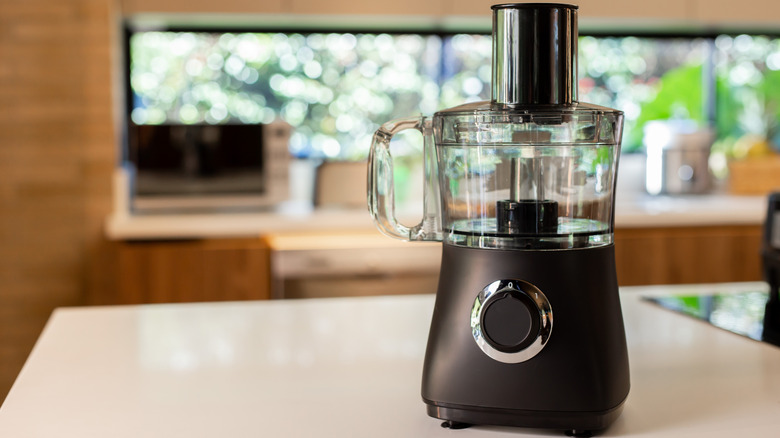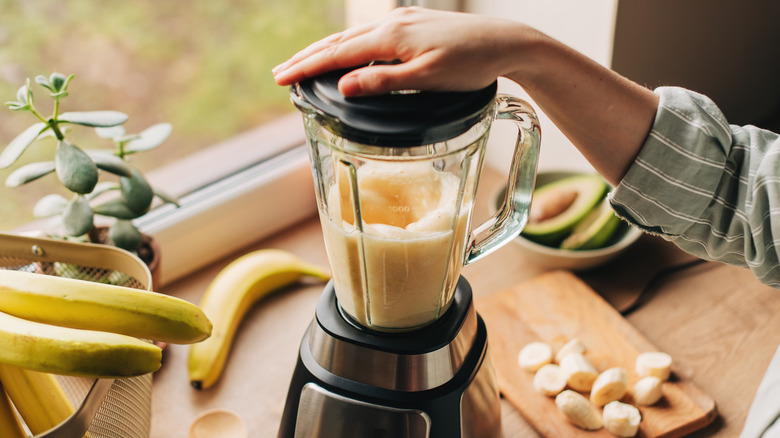When To Never Use Your Blender In Place Of A Food Processor
We may receive a commission on purchases made from links.
Blenders and food processors look similar and they share some overlap in capabilities, but they're designed for fundamentally different tasks in the kitchen. If you've ever tried to grate cheese in a blender or create a silky-smooth soup in a food processor, you know the pain is real. Blenders excel at liquefying and emulsifying, while a food processor is built for slicing and chopping.
Swapping one for the other isn't usually the best idea, so we asked an expert on which one to use and why. Courtney Cole, interior designer at TileCloud, has some thoughts. "Blenders are best for anything liquid-based, like smoothies, soups, or sauces. This is because they're really great at creating pourable texture," Cole told The Takeout. "Food processors, on the other hand, are much better for chopping and mixing doughs or dry ingredients."
It's true, you really shouldn't substitute a blender for a food processor when mixing dough, no matter if it's for pie crusts, pizza, or biscuits. Food processors have powerful motors and sturdy blades designed to evenly cut fat into flour or knead dough without the machine overheating. A blender, on the other hand, has a narrow base designed for easy movement of liquids.
If your goal is to roughly chop onions, shred carrots, or grate cheese, a food processor is absolutely the right tool. It's equipped with discs and blades specifically for shredding and slicing (just watch those fingers). You'll be in good company, too, as processors were one of Julia Child's favorite tools.
Blenders are designed to liquefy
Blenders prove their worth when you need to liquefy, purée, or emulsify. When liquid is the star of the show, the blender is your secret weapon. Cole agrees. "Blenders will really shine when you're working with liquids. They're perfect for emulsifying salad dressings, puréeing soups, or whipping up a smoothie," she said. "I like to think that it's about speed and smoothness, so if it's meant to be sippable or spoonable, it's blender territory."
In terms of specific recipes where you should reach for a blender instead of a food processor, think: smoothies, sauces, nut milks, and frozen drinks. A blender's tall, narrow shape creates a powerful, tornado-like vortex which pulls ingredients down toward the blades. If you're regularly making thick smoothies, hot soups, or icy drinks, consider a high-powered blender for the job. Standard models work for basic tasks, but they can struggle with tougher ingredients. Be prepared to shell out the big bucks if you want to make Painkiller cocktails every day this summer.
While blenders are invaluable for smoothies, soups, and purees, they're not a one-size-fits-all solution. Knowing when not to use a blender in place of a food processor will save your chunky recipes, protect your pricey appliances, and make your cooking experience much smoother (pun intended). When in doubt, ask yourself: Is this job about liquefying or chopping? If it's the latter, reach for the food processor instead.

